Refinishing Wood Floors from 1914 | Game Plan
When we bought Highland House, we knew learning how to refinish floors was in our future. Many of the rooms (almost all) were carpeted, but the hallways on the second floor hinted to what could be.
Not only would it be cost-effective (but definitely not cheap) to refinish the floors ourselves, it's a skill we both wanted to learn.
But how cost effective?
Great question! We talked to our Uncle Scott from Scott Gann Construction, and he filled us in that most people should be prepared to pay at least $3 a square foot to refinish floors. So with all 1,400 square feet, if we were to pay someone else, we would be looking at a bill of $4,200, which compared to new floors entirely, is actually a steal of a deal.
BUT, as mentioned, this is a skill we wanted to learn AND we have another 1,400 square feet waiting for us on the first floor. We'll talk about how much we acutally spent on the these floors at the end!
The weeks leading up to closing, I did all the research I could on refinishing old wood floors. And not just refinishing, because we weren't sure what was under the carpet, but what to do about wood floors beyond repair. And while I was at that, I had to find the answer to the question, what made wood floors beyond repair?
I made a list of what to consider on the day we could finally start pulling up carpet.
Are there urine spots? From everything I've read, little doggos (or big doggos for that matter) or little kitty cats can end wood floors in a hurry. Not just from a moisture standpoint—because water damage is also problematic—but just the smell of urine can hangout in floorboards indefinitely. We were prepared to find dark spots that would most likely need to be replaced.
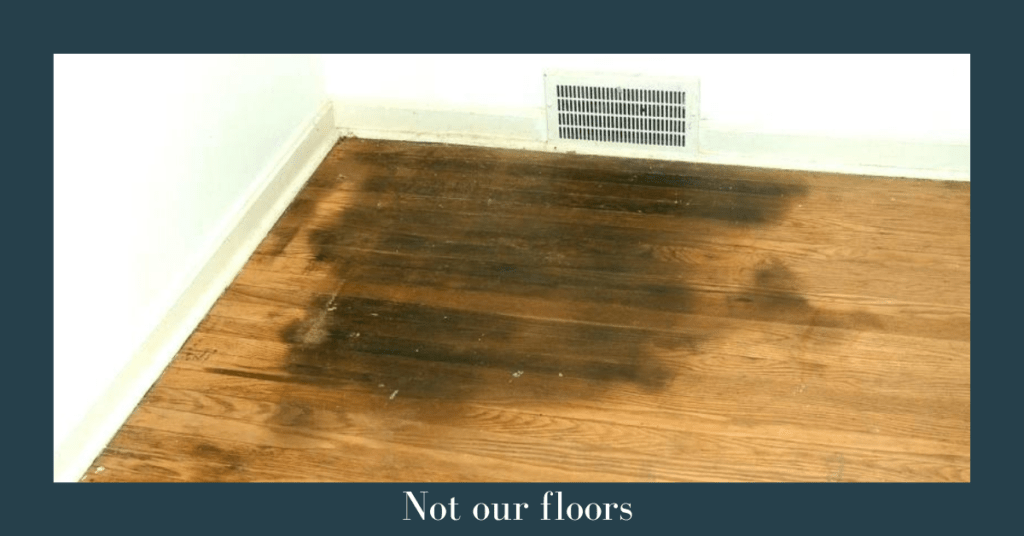
Is there any glue or adhesive? Interestingly enough, these factors don't mean the wood floors are beyond repair, it just means a significant amount of work. I read horror stories about strong-willed men and women painstakingly chipping away at old glue or scraping away gunky adhesive. We did know Highland House was once broken into two separate apartments, meaning there was a solid chance at least one room on the second floor had been converted into a kitchen. That left us with the chance of tile or linoleum in at least one room.
This was a time consideration. If we found glue, we'd need to be strategic in how much time we devoted to chipping or stripping.

Where do we need to patch and what patterns are we working with? Unless you're a hillbilly (which is totally fine, I admire that) when you're faced with a substantial hole in hardwoods, say, from a removed radiator, gluing in a rogue plank of wood isn't a sleek look. Most floors laid in the past 30 years require "finger lacing" in new boards in order to create a semi-cohesive look, but we weren't sure what floors laid in 1914 would look like.
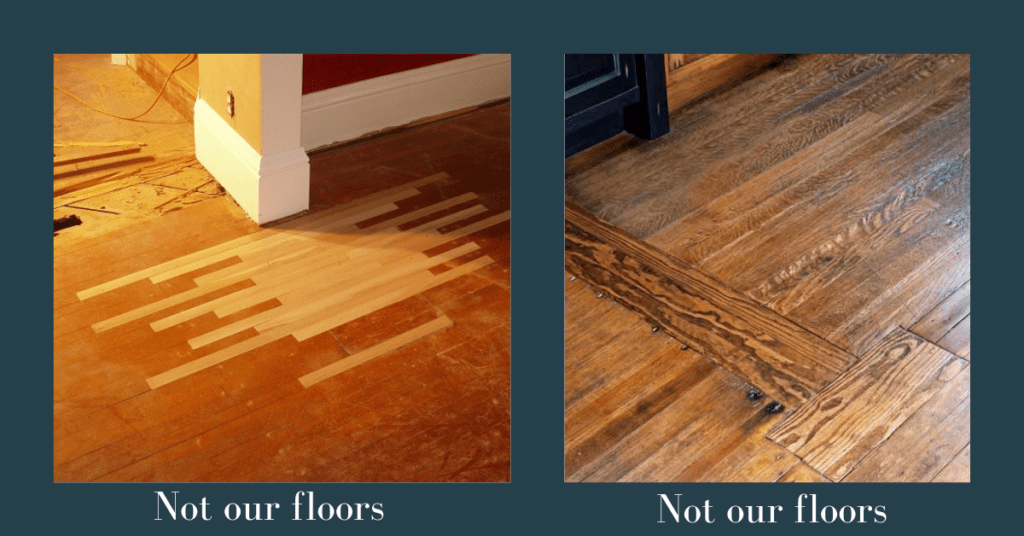
Can the floors handle another refinishing? This one scared me most of all. All wood floors on this planet have a finite number of refinishes left in them. If these floors had been sanded, stained, and sealed more than a couple times, we might have floors too thin and too brittle to sand again.
What happens if you refinish them anyway? Great question, that was something I spent a lot of time on. First, the boards will splinter. Essentially, the friction from sanding will just break them apart and you'll get a nasty splinter and you'll cry.
Second, and probably the most meaningful, is when floors have had too many layers of wood sanded away, the tongue and groove that holds the boards together is revealed and they can just pop right out of there. Options to remedy this is to "screen sand" instead, which is a fancy word for "using a more gentle sander and just take off the varnish/poly" or to replace the compromised boards. The latter is cost-prohibitive, the former not as satisfying of a finish.
Is there any room for error? This is a personal question Cole and I frequently ask ourselves. We'd like to open our home up to lodgers in a few months, and if we ran into a glue/adhesive or urine situation, could we create a workaround? This mean, I had to emotionally prepare myself to put carpet back in and to consider spaces that we absolutely had to get right. For example, the hallway. Everyone would see that. We would need to get ALL of it right or cover ALL of it.
Is there a reason the previous owners put down carpet? This is kind of a catch-all consideration, but it's helpful to get in their head a bit and try to predict why they would make that decision. I believe most people make educated decisions, and they didn't put carpet down because they were "stupid" or "didn't have any taste." Maybe footsteps were really loud on bare floors, maybe the floors were ugly enough they didn't want to bother, maybe they preferred soft carpets underfoot.
It's dangerously ignorant to walk into an old house and assume all decisions were made by idiots that weren't as smart as you. Rarely is that the case. Typically, previous residents were doing the best they could with what they had, or, they just *gasp* simply had different goals and preferences.
Closing Day
The first day we could really get in there and start inspecting the floors. I grabbed Cole's pliers and ran around like a madwoman, and here is what we found.
About 80% of the floors were in great condition. While they looked sad, dry, and dirty, we didn't find many issues. We found one room with some old glue, a dark spot, which didn't have a smell, and a few corners with bad patch jobs.
The areas that had been exposed were heavily finished—think THICK layers of some kind of poly—and the areas that had been under carpet were mostly unfinished. This was a great sign, it meant most of the floors had been protected.
A quick note on carpet over hardwoods. I've heard people complain about previous residents putting carpet over original floors, but in my professional (not at all professional) opinion, you should thank previous owners for protecting the floors. If they didn't have the knowledge or desire to take proper care of them, covering them is the next best thing. All the areas that had been carpeted were in the best condition. Fewer gouges, stains, and spills.
We then decided the floors had plenty of life left in them, had a few patch jobs we'd have to figure out, and at least one room that will require dedicated glue removal.
The next step would be...prepping and sanding! Stay tuned for the next installment!
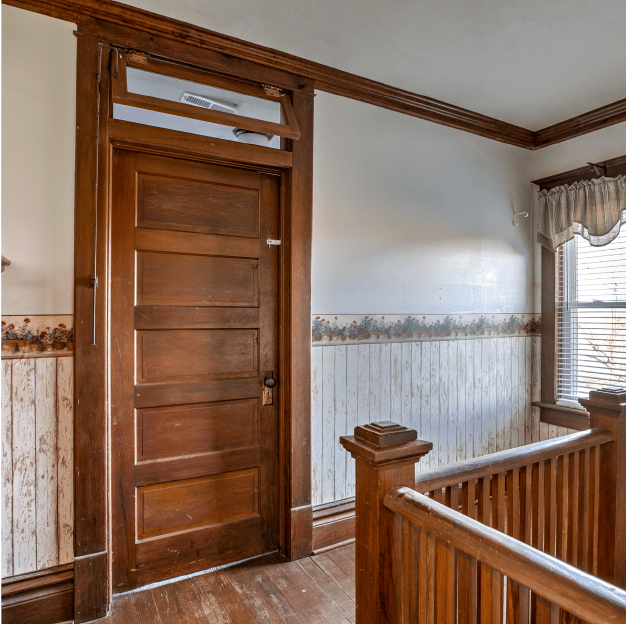
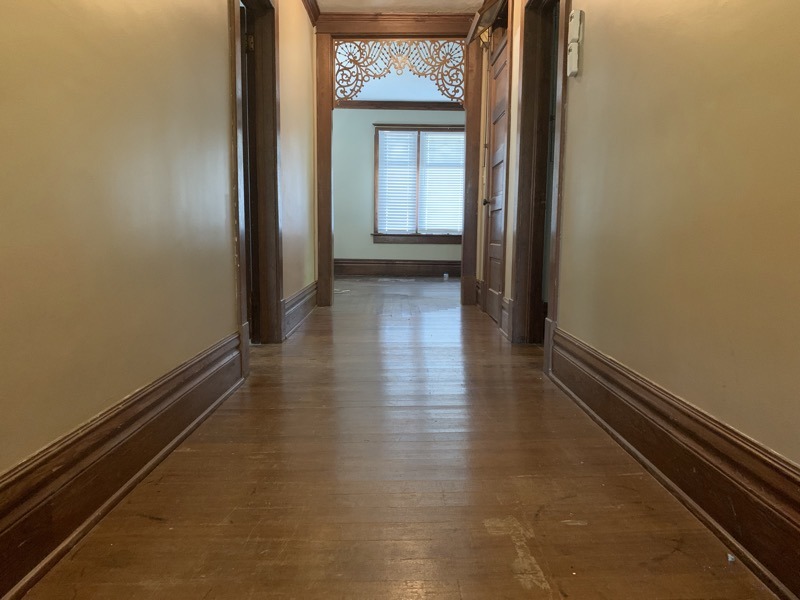
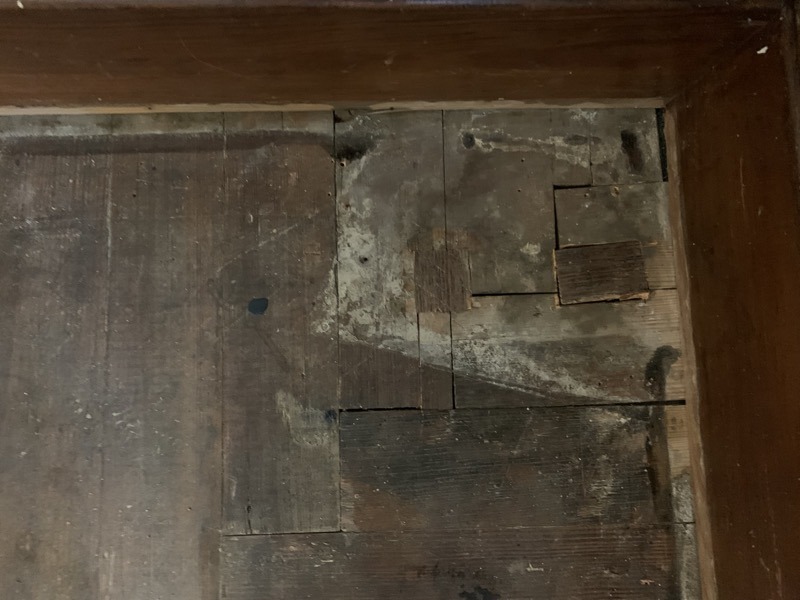
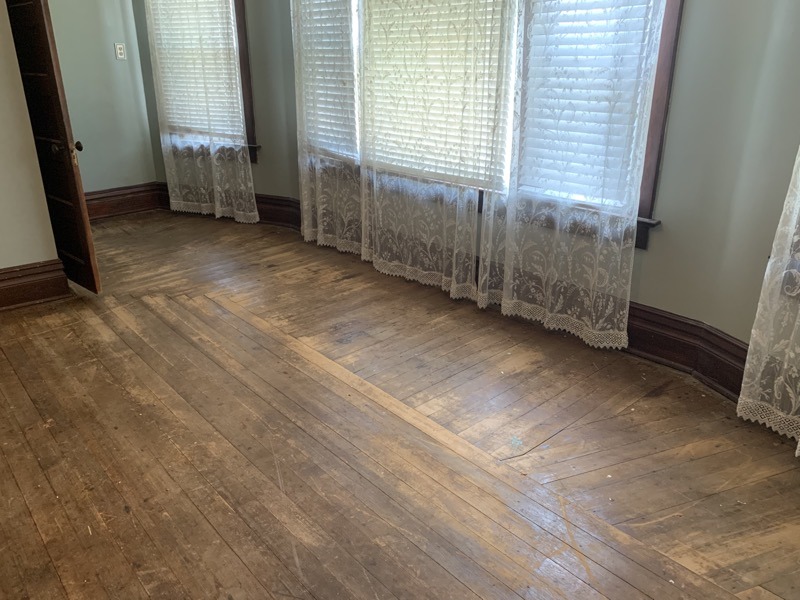
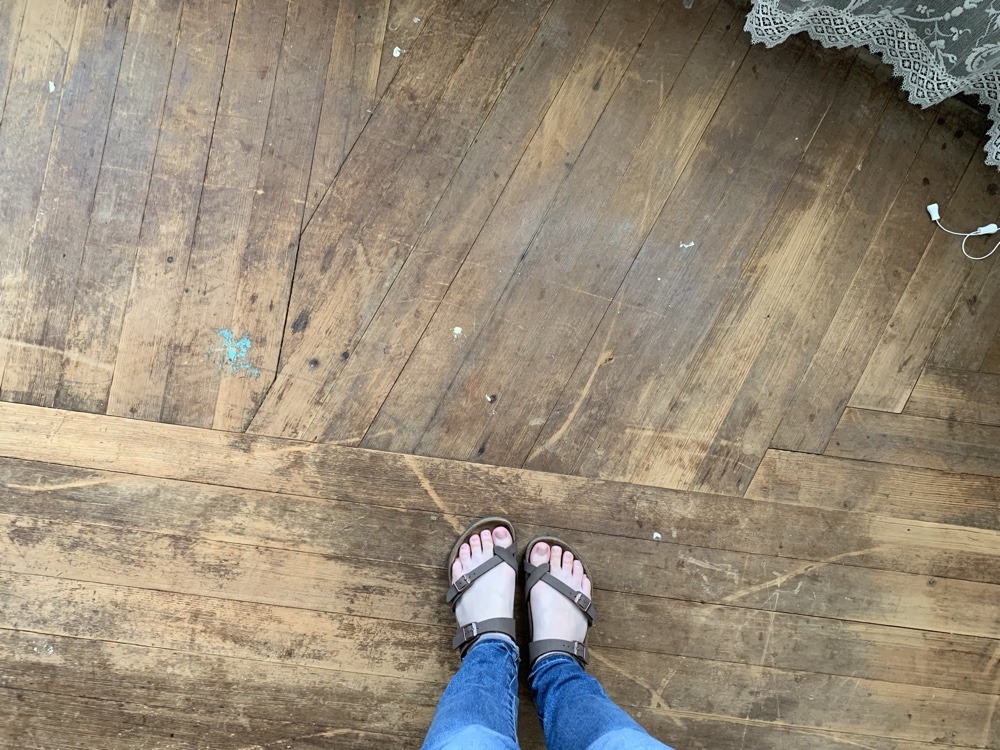
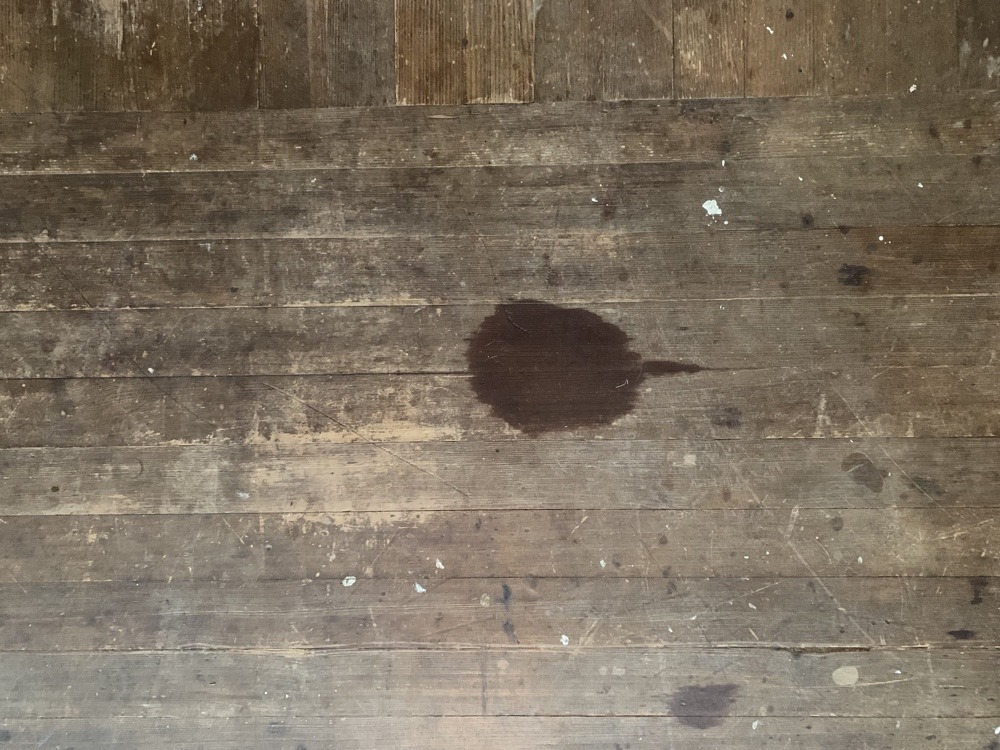
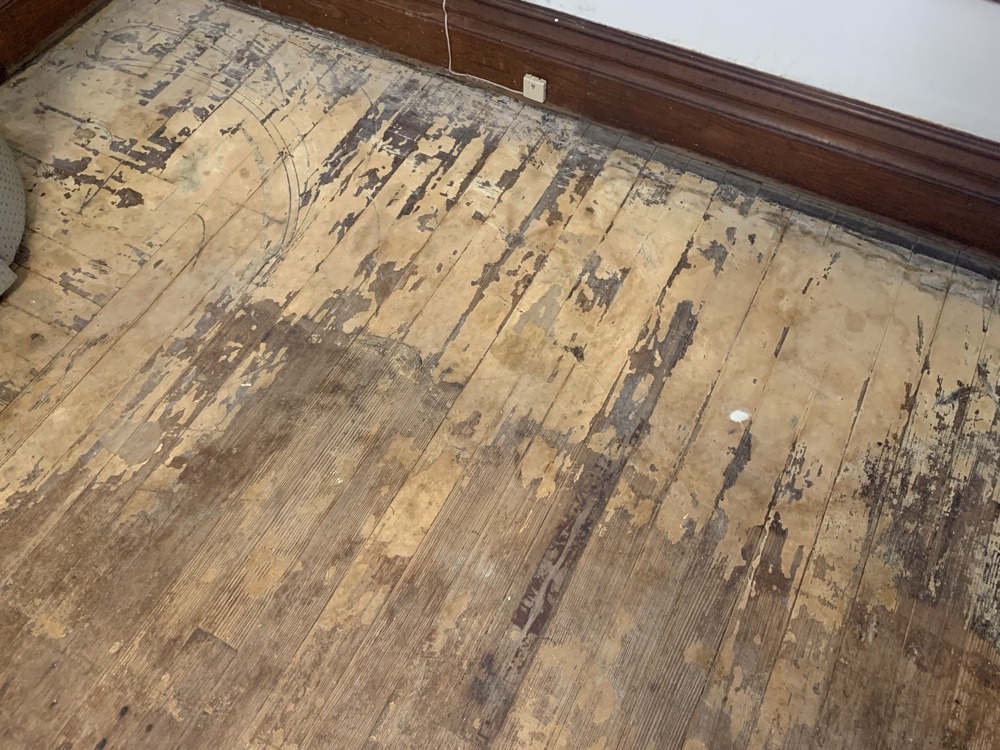
Great post! I appreciate the very slow updates, b/c they are thorough and show just how much thought and research you all have put into this.
Great article! I really appreciate the clear and detailed insights you've provided on this topic. It's always refreshing to read content that breaks things down so well, making it easy for readers to grasp even complex ideas. I also found the practical tips you've shared to be very helpful. Looking forward to more informative posts like this! Keep up the good work! YouTube Downloader Online